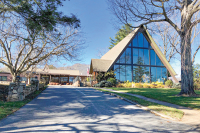I’ll vote for candidates who support education
When I vote, I take a broad perspective. I care about the present and its immediate requirements, but I also consider the long-range view, and by melding the two, I try to vote wisely and compassionately.
Though not a one-issue voter, I am a voter whose career-long focus has been on public education and poverty, undoubtedly ad nauseum to those who know me best.
Shame on Raleigh for making teachers buy classroom supplies
By Lori Wright • Guest Columnist
To all of my fellow teachers and parents, I only have one question: how much more do we have to endure? School has started again, and with that comes a yearly tradition. Once again, teachers like me are being forced to beg for basic school supplies. Some supplies I will be able to get from generous friends and families, but what will I do for the supplies I can’t get through donations? The same thing public school teachers are forced to do every year — pay for these basic classroom supplies out of our own pockets.
Building on something good: Educational remedies for workforce deficiencies
Heaters that won’t heat. Lights that won’t light. Pipes that won’t pipe.
The modern conveniences most people have taken for granted are just that — taken for granted — until something goes awry. And when the basement’s full of sewage, who ya gonna call?
Economic development agency defunded; longtime director retires, earns state’s highest honor
Mary Ann Morgan was a one-woman show with a shoestring budget for more than 40 years but still, she managed to change the lives of hundreds of people who walked into her office without much hope for their future.
Jackson schools see gains and losses in school performance
Jackson County Schools showed mostly level performance over last year with the release of statewide school performance data for 2017-18 this month.
Live animal programs offered for schools
Schools and other educational organizations in Western North Carolina have the opportunity to bring wildlife education programs to their home turf through the Mountain Wildlife Outreach program.
Opinion split on middle school
A public input session on the question of whether Jackson County should form a middle school drew split opinion during a public hearing Tuesday, Aug. 7.
Jackson mulls middle school
Jackson County stands alone among the western counties for not having a separate middle school, but a group of parents is hoping to change that.
Haywood school board names principals
Several key staff positions within Haywood County’s high-performing public school system have been filled by some familiar faces, and there may be more to come.
Macon passes $51 million budget
Following plenty of public input, Macon County commissioners approved a final budget for the 2018-19 fiscal year that includes more than $1 million in additional funding for public education.









